Broken Bay Pearls at centre of new study
BROKEN Bay Pearls is the only Akoya pearl farm in NSW and it’s producing gems of amazing colour and quality. A new study has sought to unravel the mystery of how and why.
Central Coast
Don't miss out on the headlines from Central Coast. Followed categories will be added to My News.
- Game of Drones set to become next big tech craze
- Fish dying as river dries up
- Nigella Lawson dines on Central Coast
- Green tea co-op seeks new members
A LITTLE known business operating from a tiny shed in Brisbane Water estuary is producing some of the best cultured pearls in the world.
Broken Bay Pearls at Woy Woy is the only Akoya pearl farm in NSW and the annual pearl oyster seeding period is well underway this month.
The pioneering growing techniques used on the farm are leading a new way in cultured pearl production which is environmentally friendly and chemical free.
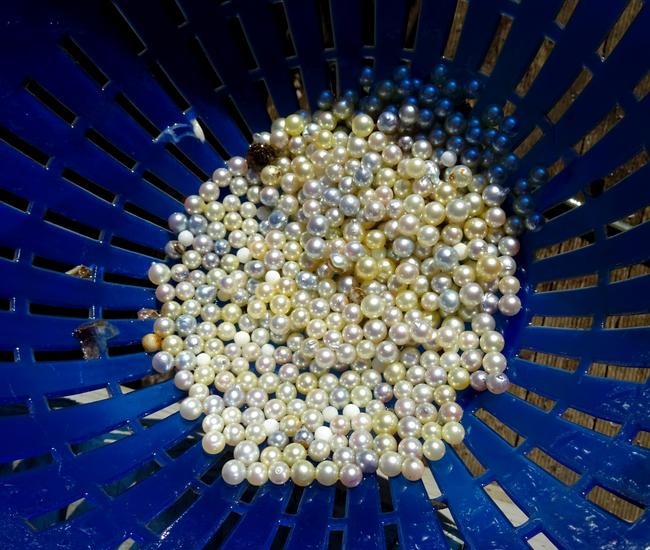
Instead of the bleached and dyed silver and white pearls which come out of the massive Japanese and Chinese industries, Broken Bay pearls come in a range of hues — yellows and oranges, blues, creams, silver-greens and pinks.
The first ever study into the unique qualities of the pearls was carried out by Macquarie University researchers last year and has just been published in the journal, Gems and Gemology.
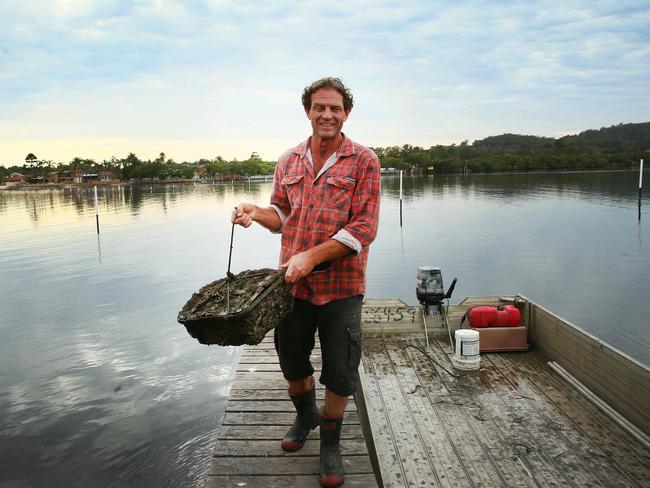
During the study, researchers documented pearl seeding and harvesting procedures and sampled pearls of various colours, shapes and sizes. The pearls were analysed using various scientific methods at Macquarie University and at Johannes Gutenberg University in Mainz, Germany.
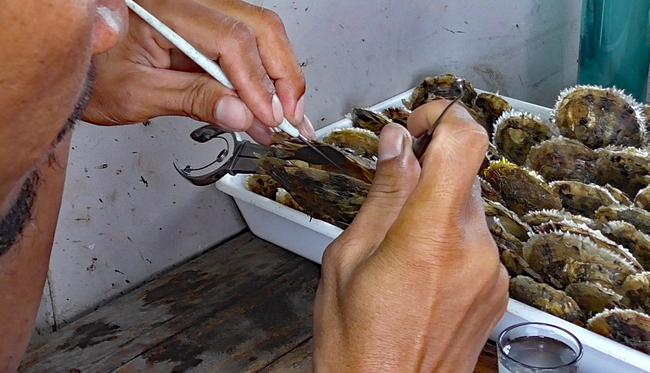
Researcher Laura Otter said the Broken Bay pearls were special because they occurred in a wide variety of unconventional natural colours.
“The study was a unique opportunity, for us to be able to observe this richness in colour range,” Ms Otter said.
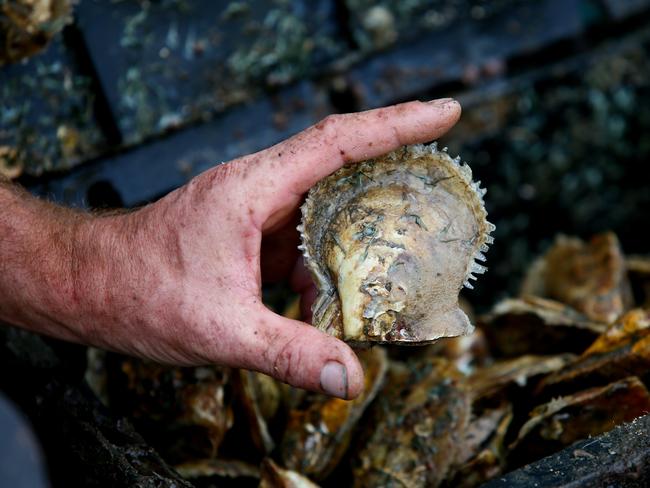
“The pearls from Broken Bay are marketed without the use of any bleaches or dyes as is common practice elsewhere in the world.”
Ms Otter said a growing number of Australian retailers had embraced this new local source of Akoya cultured pearls and used them to create locally manufactured jewellery.
“The aim of the study, was to characterise this new source of akoya pearls with their unusual colour palette to see and understand how these pearls differ from other pearls,” Ms Otter said.
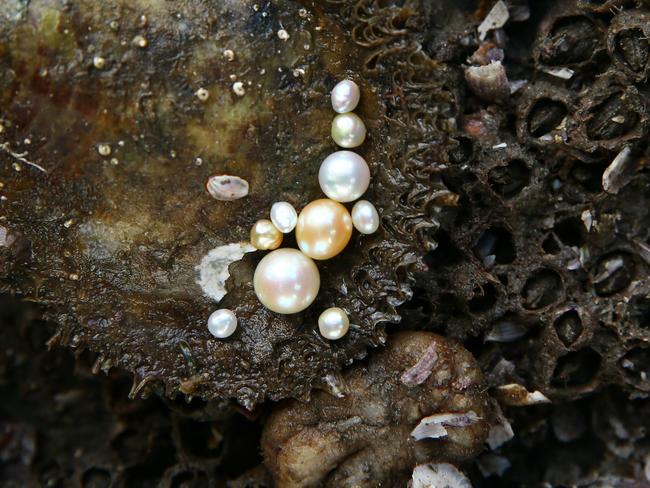
“In the future, these findings will help to discriminate between different origins of Akoya pearl production.”
Ms Otter said this information was essential for gem-testing laboratories to determine authenticity and origin and whether they had been chemically treated — important information for buyers.
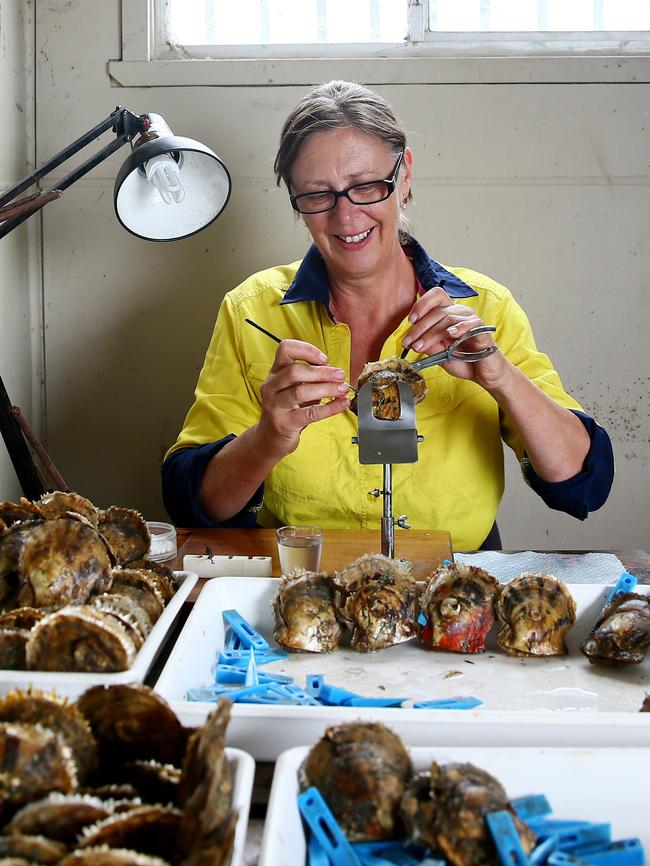
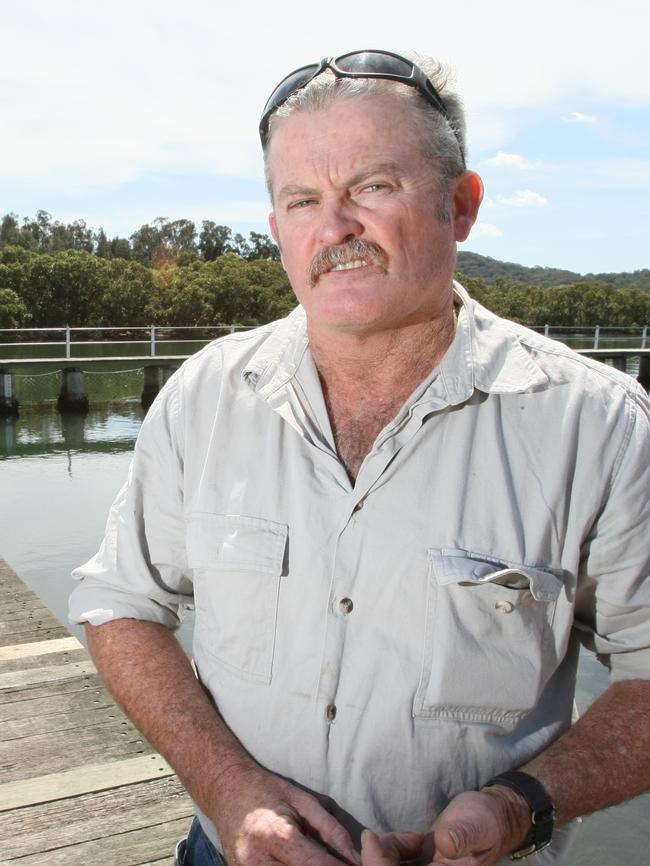
Local know-how
The research has been welcomed by two of the founding members of Broken Bay Pearls — Ian and Rose Crisp — who said authentication of local pearls was crucial.
Mr and Mrs Crisp, started their research into the possibility of growing pearls in 1999 before starting the company with some other oyster growers in 2003 as a “back up” to the vagaries of food oyster production.
“It’s been an interesting journey and we’re still in it,” Mr Crisp said.
“We knew from the first harvest that we had an exceptionally high quality Akoya pearl — and since then we’ve been told they are the best Akoya pearls ever grown in the world,” he said.
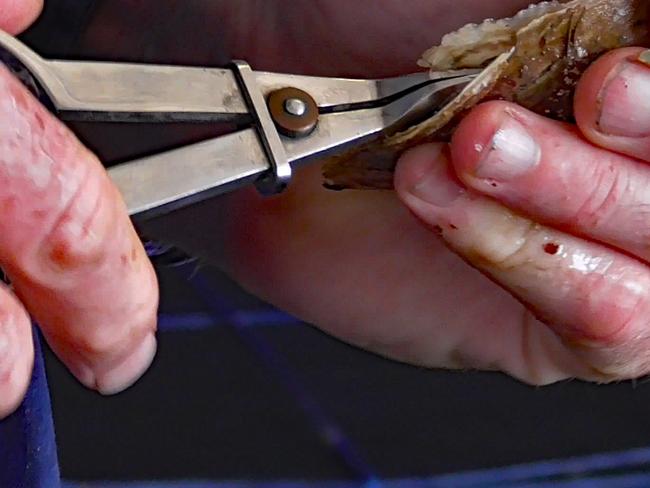
“We knew we had a high quality pearl we could market as an unbleached, undyed, untreated pearl and we’ve done that,” he said.
Mr Crisp said 98 per cent of the uniform white pearls that came out of Japan and China had been chemically treated.
“Everything has to be perfectly white — everything has to be exactly the same,” he said.
“We’ve stuck with not doing that as a company right from the start.
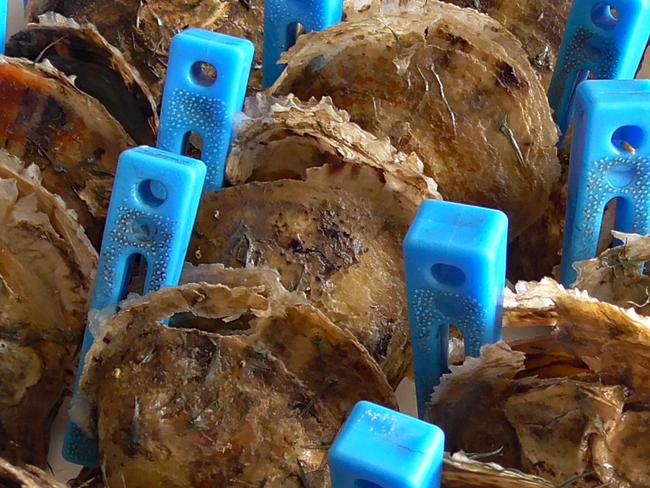
Rose Crisp runs the oyster seeding shed and is one of a very few Australians who can say they know how to seed an oyster.
She learned the technique from a Japanese expert.
“Not something you can learn overnight,” she said.
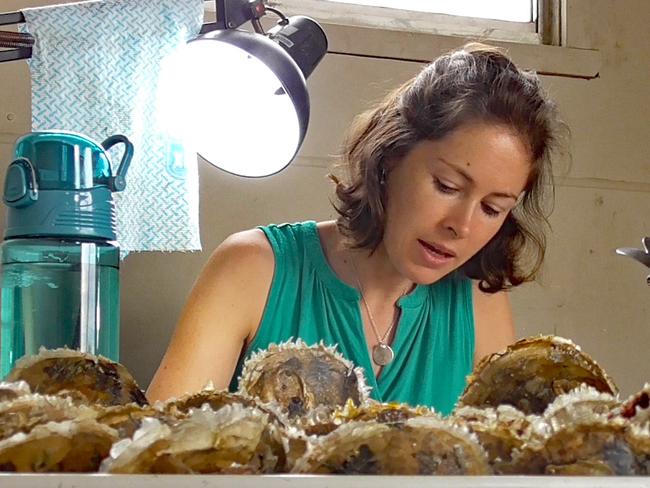
Jewel in the crown
Nobody appreciates the retail potential of Broken Bay’s unique pearls better than Central Coast jeweller Celeste Boonaerts.
Ms Boonaerts came to Woy Woy from Sydney in 2011 and is now heavily involved with Broken Bay Pearls.
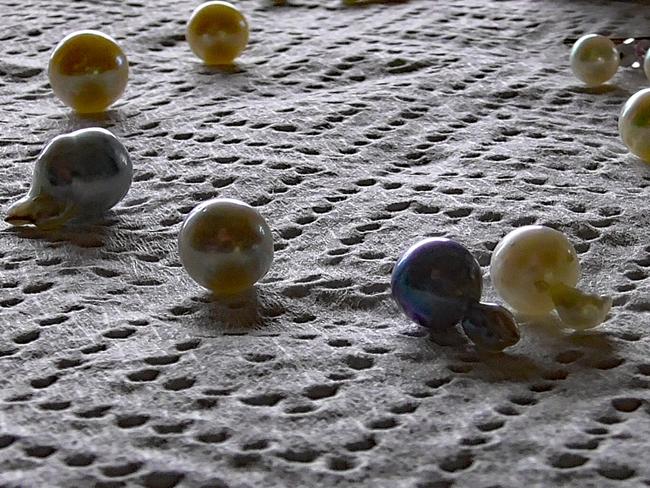
She was at the seeding shed this week getting involved with production
“It’s been wonderful to learn seeding and I’ve been taking part in the harvest for a few years,” Ms Boonaerts said.
“I most love the lustre of these Akoya pearls — far better than the Japanese pearls I’ve bought in the past,” she said.
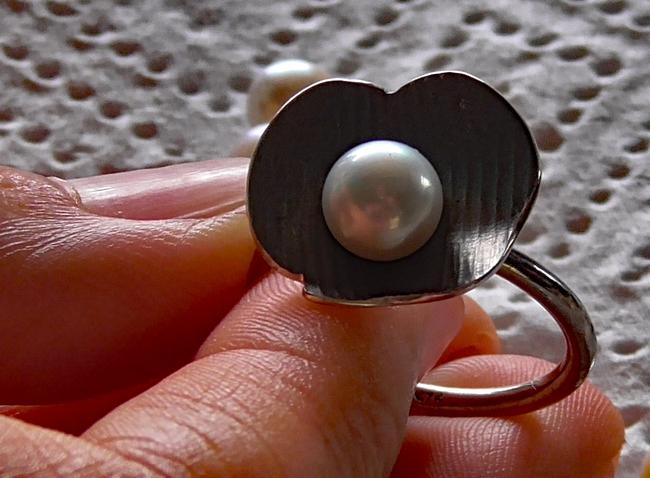
“The Akoya oyster is native to this area so it’s part of the local story.
“I see a lot of character in the blue hues and the silver hues and the golds and pinks and in the natural shapes.
“People value hand made natural products.”
Jewellery featuring the pearls is available at Gosford Regional Gallery.
Why here?
Brisbane Water estuary is one of the few places in NSW where pearls can be grown.
The degree of salinity in the water is one of the most important factors.
“We’ve tried coast wide to grow pearls and this estuary really outperforms everywhere else,” Mr Crisp said.
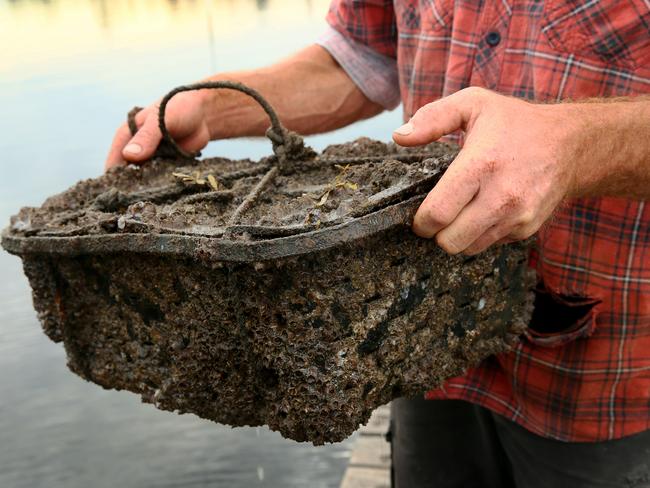
“The estuary has very little catchment so we don’t get heavy influxes of freshwater when it rains — that is the problem with most of the other estuaries in NSW — they might be great for other kinds of oysters that are freshwater tolerant — but these pearl oysters don't like it.
“That coupled with continued improvements of sewerage management and urban run off over the last two or three decades as made a huge difference.
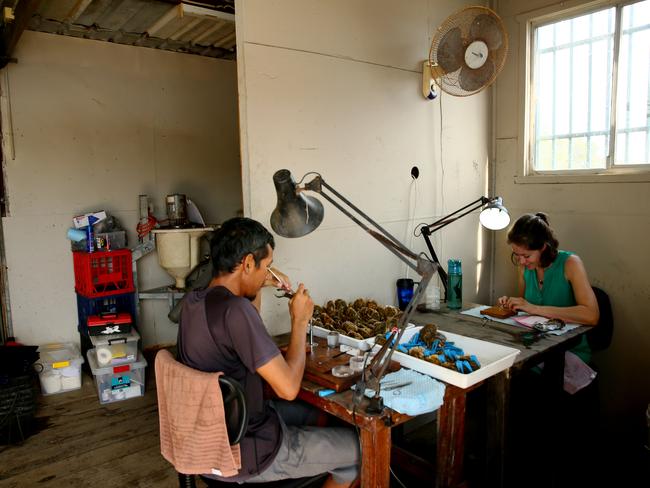
Farm facts
■ Broken Bay Pearls produces several thousand pearls a year and about half of those are of “gem quality”.
■ They average in size from 6.5 to 8mm but occasionally grow as large as 10mm.
■ Pearls are seeded in February and harvested in July the following year.
■ The oysters in which they grow occur naturally in NSW.
